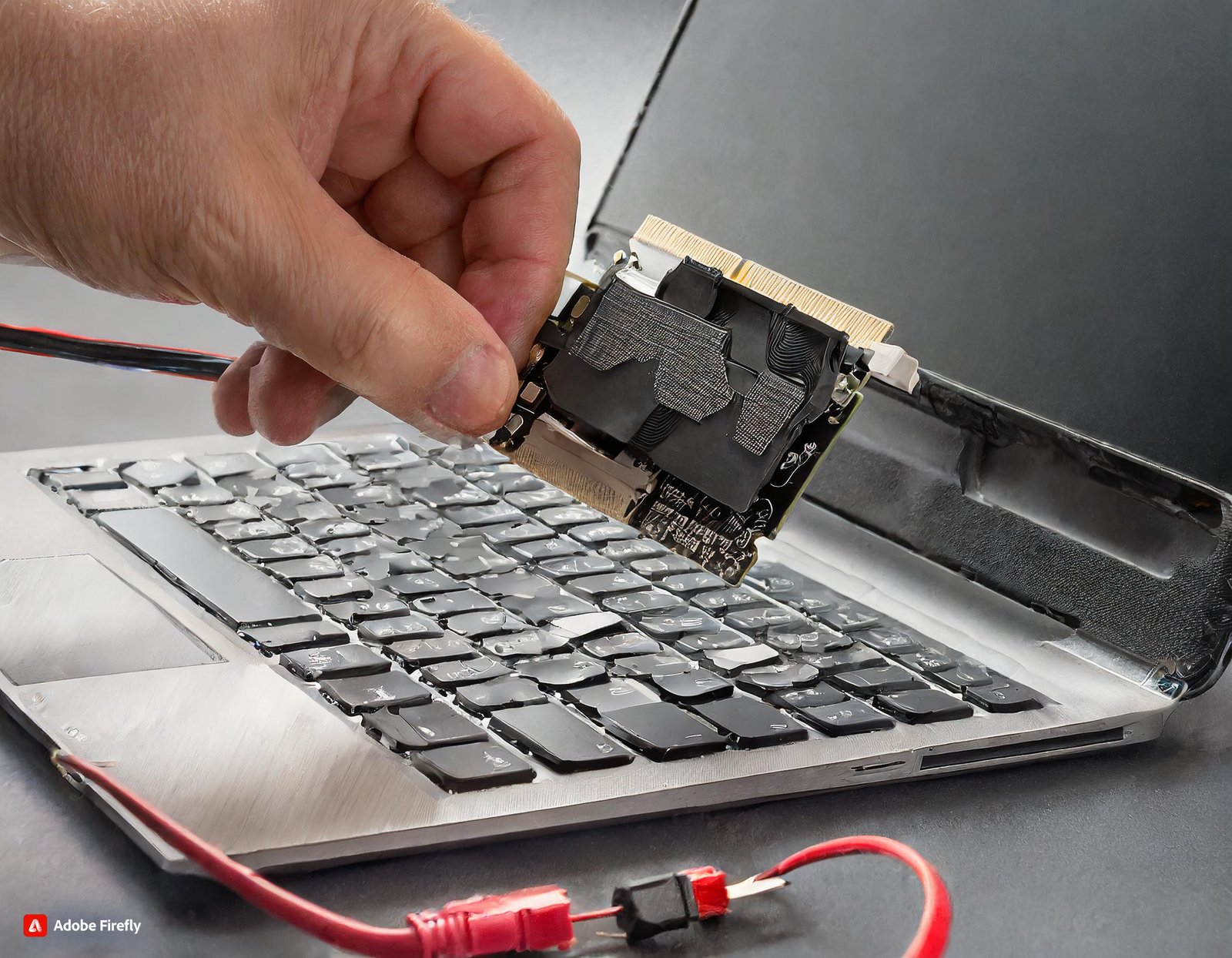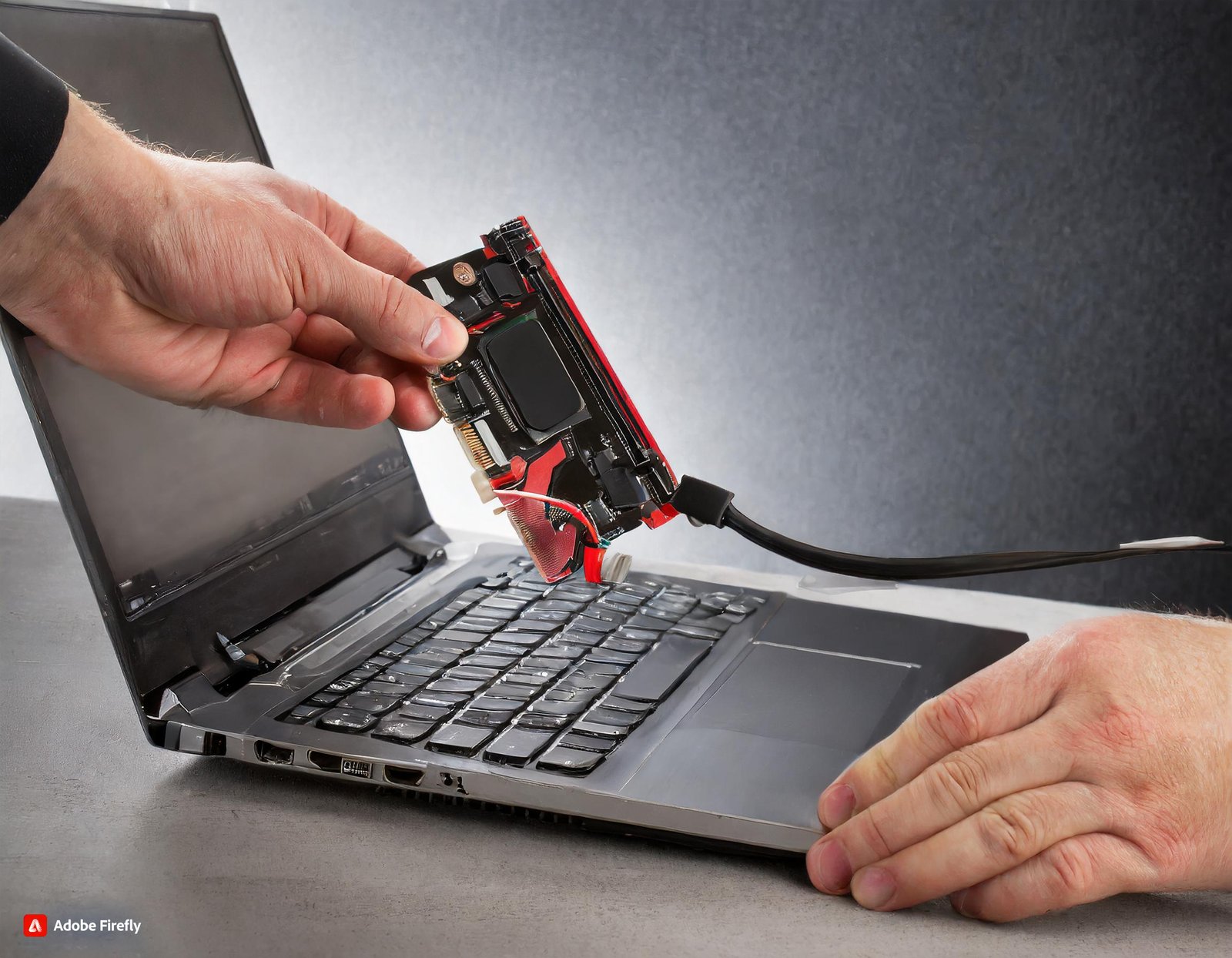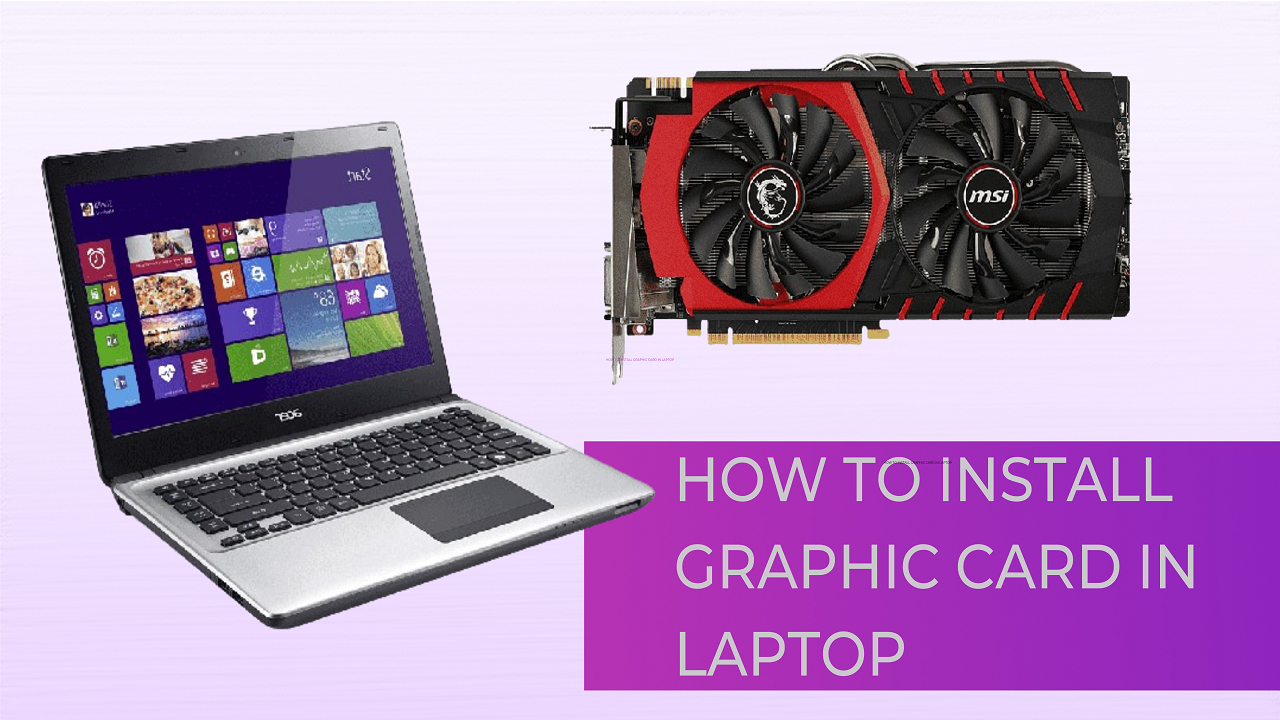Upgrading Your Game: How to install graphic card in laptop
How to install graphic card in laptop: While laptops offer fantastic portability, their integrated graphics cards often struggle with demanding games and applications. This is where External Graphics Processors (eGPUs) come in! An eGPU allows you to harness the power of a desktop graphics card for your laptop, significantly boosting graphical performance.
However, unlike desktops, where you can simply swap out the graphics card, installing an eGPU for your laptop requires a different approach. This guide will walk you through the process of turning your portable machine into a gaming powerhouse.

Important Note: While eGPUs offer a performance boost, they do not involve installing the graphics card directly inside your laptop. Laptops are not designed for such modifications, and attempting to do so could damage your device.
Here’s what you’ll need:
- An eGPU enclosure: This acts as an external housing for your desktop graphics card. They come in various shapes and sizes, so consider factors like portability and available ports when choosing one.
- A compatible graphics card: Ensure your chosen eGPU enclosure can accommodate the size and power requirements of your desired graphics card. Check the enclosure’s manual for specific compatibility details.
- A Thunderbolt 3 cable: This high-speed connection is essential for communicating between your laptop and the eGPU. Verify your laptop has a Thunderbolt 3 port before purchasing an eGPU.
- Power supply unit (PSU): Most eGPUs require a separate PSU to power the graphics card. The enclosure’s documentation will specify the required wattage.

Installation Steps:
- Power Down and Disconnect: Always ensure your laptop and any other connected devices are turned off and unplugged before starting the installation process.
- Prepare the eGPU Enclosure: Following the enclosure’s manual, install the graphics card inside the eGPU. This might involve removing panels and securing the card with screws.
- Connect the Graphics Card: Carefully connect the graphics card to the designated slot within the eGPU enclosure, typically a PCI-Express lane.
- Power up the eGPU: If your eGPU has a dedicated power button, turn it on now. Otherwise, proceed to the next step.
- Connect the eGPU to Your Laptop: Using the Thunderbolt 3 cable, connect the eGPU to your laptop’s Thunderbolt 3 port.
- Install drivers. With everything connected, power on your laptop. The operating system might automatically detect the eGPU. However, downloading and installing the latest graphics card drivers from the manufacturer’s website is recommended for optimal performance.
Optimizing Performance:
- BIOS Settings: Some laptops might require adjustments in the BIOS settings to prioritize the eGPU for graphics processing. Consult your laptop’s manual for specific instructions on accessing and modifying BIOS settings.
- External Monitor: For the best gaming experience, connect an external monitor to the eGPU’s display outputs (HDMI, DisplayPort, etc.).
Additional Considerations:
- Compatibility: Double-check compatibility between your laptop, eGPU enclosure, and graphics card before purchasing any components.
- Thermals: Running a powerful graphics card can generate heat. Ensure your eGPU enclosure has sufficient cooling to prevent overheating.
- Portability: While eGPUs offer a performance boost, they add bulk and weight compared to a standalone laptop. Consider this if portability is a major concern.
By following these steps, you can successfully install an eGPU and unlock the potential of powerful desktop graphics on your laptop.
Conclusion:
Investing in an eGPU can transform your laptop into a gaming beast, offering graphics performance comparable to high-end desktops. With careful selection of components and following the installation steps outlined above, you can enjoy smooth gaming and enhanced graphical capabilities on your portable device.
FAQs (Frequently Asked Questions):
- Can I use any graphics card with an eGPU?
- While many graphics cards are compatible, it’s essential to check compatibility with both your eGPU enclosure and laptop before purchasing.
- Do I need to buy a separate monitor for an eGPU setup?
- While not mandatory, connecting an external monitor to the eGPU can enhance your gaming experience and offload some processing from your laptop’s display.
- Is it possible to upgrade the graphics card in an eGPU enclosure?
- Yes, in most cases, you can upgrade the graphics card in your eGPU enclosure to keep up with the latest gaming demands.
- Will using an eGPU void my laptop’s warranty?
- It depends on the manufacturer and their warranty policy. Some manufacturers might void the warranty if they detect modifications like using an eGPU, so it’s essential to check before proceeding.
- Can I use an eGPU with any laptop?
- No, not all laptops are compatible with eGPUs. Ensure your laptop has a Thunderbolt 3 port and check for compatibility with your specific model before purchasing an eGPU setup.

